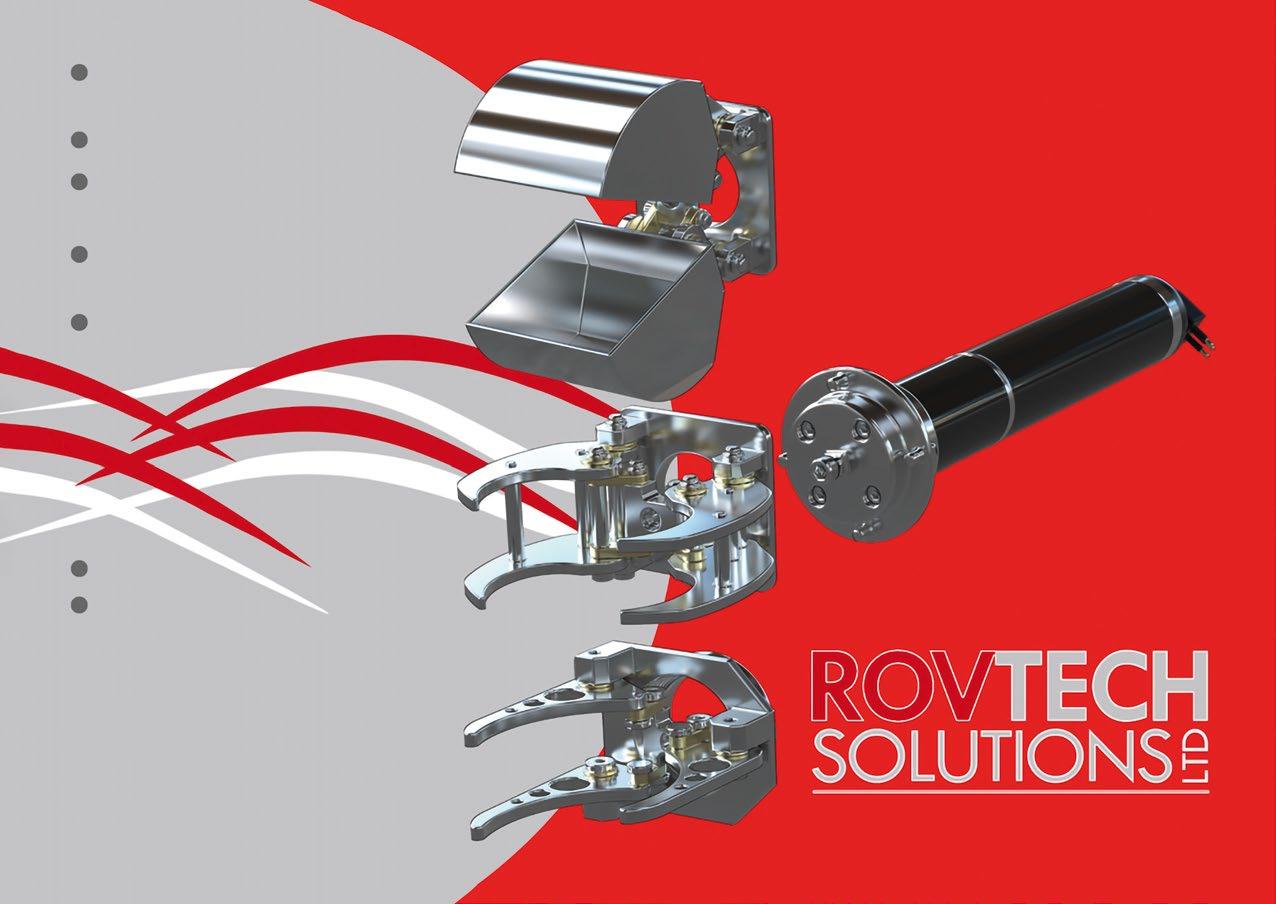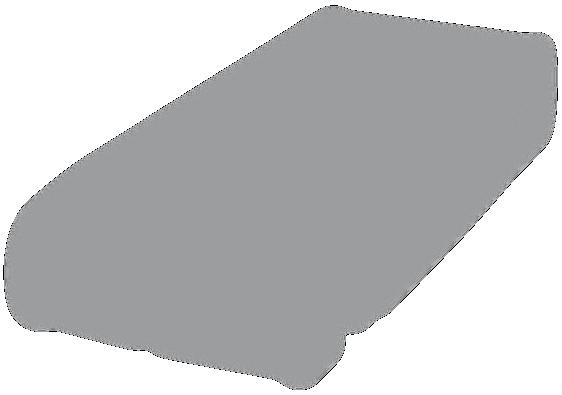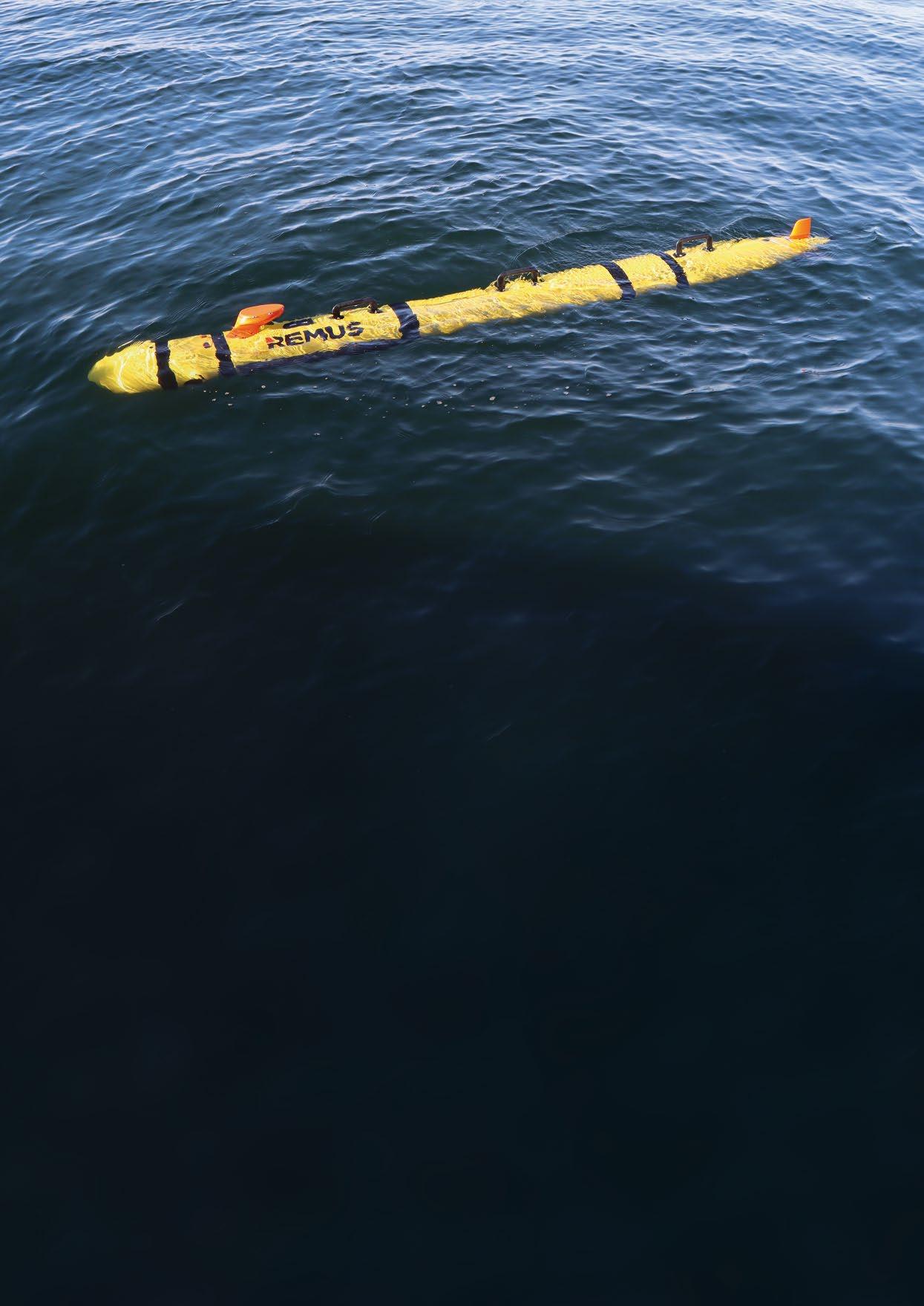
11 minute read
The Future of the Autonomous Underwater Vehicle Industry
REMUS 300 UUV (Courtesy of HII)
Richie Enzmann chats with Duane Fotheringham, president of the Unmanned Systems business group at Huntington Ingalls Industries (HII), Technical Solutions division, about his perspective on what the future holds for AUVs.
Advertisement
HII’s USV solution include sensor fusion, perception, and multi-agent command and control. (Courtesy of HII)
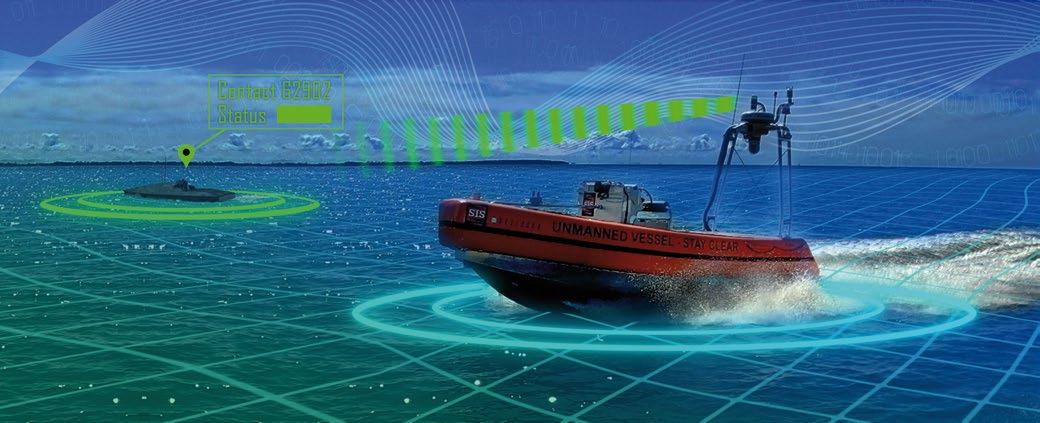
RICHIE ENZMANN: With the new acquisition of Hydroid by Huntington Ingalls Industries (HII), would the technology – or the focus of the technology – change?
DUANE FOTHERINGHAM: The reason HII acquired Hydroid was for our deep domain experience and expertise in autonomous unmanned underwater vehicles. Overall, we see the increasing importance of unmanned systems in the future of maritime operations, on both the military and the commercial side.
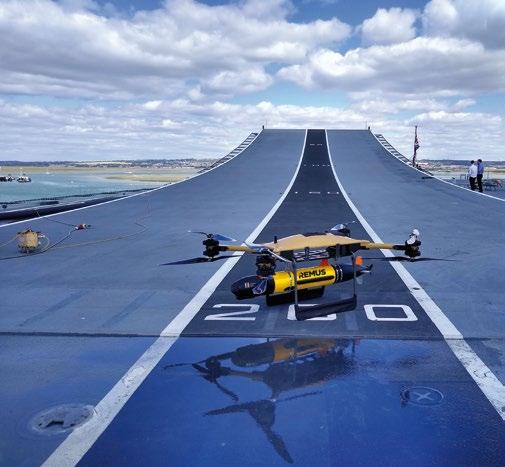
HII is a U.S. defense contractor and a shipbuilder and has been very involved on the military side of things. Hydroid also had a strong history in commercial and international markets, so all these things are coming together. It’s been over a year since Hydroid became part of HII and we are fully integrated with the unmanned systems that HII already had in their portfolio: primarily the large underwater vehicles that were part of a previous acquisition from the Columbia Group, but also the partnership with Boeing on the fabrication of the Orca XLUUV.
And we have been increasing our capabilities throughout the year, so it’s been a busy 12 months for us. During the summer we made an equity investment in Sea Machines which is a provider of USV technology, so we are really increasing our unmanned systems portfolio from underwater to the surface.
We announced another large investment in the fall with the development of the Unmanned Systems Center of Excellence, which is a high-tech manufacturing operation in Virginia. We see this facility as complimentary to all of our manufacturing that we are currently doing.
Right at the end of the year, we acquired the autonomy business of Spatial Integrated Systems (SIS). Their primary work is with unmanned surface vessels, and they have some significant positions there, but they also have some positions in ground and aerial vehicle autonomy. We are really expanding the scope of what we are doing and how we define unmanned systems. We now have the full portfolio: under the water, on the surface, and in limited cases in the ground and air.
A HII REMUS 100 UUV was launched from a Malloy T150 UAV as part of a proof-of-concept demonstration during the Advanced Autonomy Force (AAF) 2 exercise. (Courtesy of HII)
RE: Are you trying to integrate the different domains into one complete system then?
DF: That’s right. We see all these things as key for an unmanned portfolio. What we have been really working on is the integration of the autonomy. Taking the capabilities that existed within HII, Hydroid, and SIS, and forming them together into one autonomy architecture. There are a lot of overlaps in the different domains. A lot of development of the future capability of unmanned systems is in increasing the capabilities of the autonomy.
RE: Do you think that the human operator will ever be taken out of the loop? Could these systems be truly autonomous one day when the decisions are made by the machine itself?
DF: I guess it all depends on how you define that. One of the unique things about underwater vehicles is that they have a very limited communication span over relatively short ranges compared to other domains. We have been building AUVs for 20+ years and most of those are fully autonomous.


Royal Dutch Navy REMUS Team recovers AUV during Trident Juncture 18 (Courtesy of HII & NATO, Photo by Wo Fran C. Valverde) The new REMUS 300 UUV combines advanced modularity and flexibility in a two-man portable platform. (Courtesy of HII)

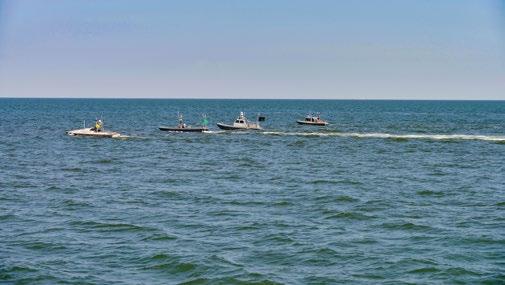
Rendering of HII’s new Unmanned Systems Center of Excellence, due to open in Q4 of 2021. (Courtesy of HII) Four vessels demonstrating a swarm operation outfitted with HII autonomy solutions including perception, autonomous health monitoring, and multi-agent commence and control. (Courtesy of HII)

We put vehicles in the water, they go out and do the mission, and that mission can last from 8 hours for a small vehicle all the way up to 30+ day missions with very little communications or man in the loop. The man in the loop in those cases is usually limited to receiving information and small redirects – in essence, they can operate that whole time without a man in the loop. Our Seaglider UUVs are out there typically for 90+ days. They certainly communicate, but it’s not required to do that to run the mission and is not required to have any operator intervention. So that way, we are a man out of the loop. What we are able to do with the increasing autonomy is really increase the capability of the vehicles. We are moving from a much more deterministic type of autonomy, where the vehicle goes essentially down the decision tree of choices, to a more artificial intelligence/machine learning autonomy, where the vehicle can actually make a decision on its own based on the information it is gathering during the mission. That is where we see the capability increasing.
RE: When you say “deterministic”, you mean that, for example, in Mine Counter Measures the vehicle would include the detection of mines and how to disable them, right?
DF: Most of our work right now is with the detection of mines. The vehicles we put in the water run a mission and that mission may be able to be adapted in situ by the vehicle depending on what the environmental conditions are. When it returns, we would download and analyze the data and visually identify the mines and take the next steps. We are now operating systems that the Navy calls single sortie detect to engage. This means that the vehicles can go out, the software can automatically identify mines, and the vehicles can change the missions to go back and reengage the mines with either a high-resolution sonar or with optical sensors. The vehicles can ultimately relay that information back to other vehicles or people, that then act against the mine to destroy it. But it is typically two separate types of vehicles that detect and then do the mine disposal.
RE: So there is some cooperation between the vehicles then, right?
DF: Absolutely. They can have cooperative autonomy, meaning that one vehicle can communicate with the other and pass information back and forth between them depending on the mission defined. One example of that would be that one vehicle detects the mine and cues the second vehicle to either come in with a better resolution sonar or perhaps even to dispose of the mine.
RE: When people talk about swarming, are you far off from that, or does that imply a higher number of vehicles and a more coordinated approach?
DF: That is one of the significant capabilities that we brought in with the autonomy business from SIS: multi-vehicle autonomy, which is another word for swarming. This is a significant capability for multiple vehicles working together cooperatively on the surface and can also be applied to our subsurface vehicles.
RE: Do you think that some other areas of underwater warfare could also use these kinds of technology? With mine countermeasures you have a static target. But would the


1000-meter rated Seaglider operated by NOAA. (Courtesy of HII)
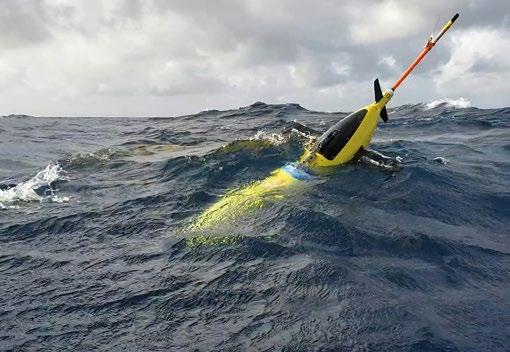
same apply for dynamic targets in the battlefield for antisubmarine warfare?
DF: That is certainly an application area for our unmanned surface vessels and unmanned underwater vehicles. Our REMUS UUVs can be integrated with submarines and the Navy has programs out for unmanned surface vessels for antisubmarine warfare missions. There are lots of different military and non-military missions that these vehicles can do besides mine countermeasures. Some of the missions particularly well suited to unmanned systems are ISR (intelligence, surveillance and reconnaissance) missions, going into places where you would not want to put a manned platform to gathering information about an environment. There are many sensors that can be put onto the vehicles to gather information.
RE: And I guess the vehicles can also be used for survey, research, etc when going into the commercial/civilian side of things.
DF: Yes, absolutely. A big application area for both unmanned surface and underwater vehicles is seabed survey including side scan survey and hydrographic survey. Our vehicles have been used by the U.S. Navy, the Naval Oceanographic Office, for gathering hydrographic quality data capable of building charts. That says a lot about both the performance of the sensors as well as the positioning systems of the vehicles to be able to collect data with enough accuracy to go onto nautical charts. This has always been an application area for surface vessels in general, but again, autonomy removes the man off these platforms to be much more efficient than a manned platform.
RE: Do you think that humans would be removed from military submarines as well?
DF: The simple answer is probably not. What we see is cooperation: the ability for manned and unmanned platforms to be interoperable and work together to perform missions that otherwise they wouldn’t be able to do themselves. Unmanned systems are certainly a force multiplier for manned submarines. And there are missions that are wellsuited for unmanned systems where we want to operate for long periods of time to gather information, gather intelligence, and put sensors on targets. But also missions that
REMUS 6000 being launched from the quayside. (Courtesy of HII)
are best suited for manned missions where you have a significant number of people making decisions and performing those complex missions that may be outside of the capability of an unmanned vessel. However, the unmanned platforms can give them capabilities that they would otherwise not have.
RE: That makes sense. What’s going to be the next product or capability for Hydroid/HII? Is there anything in the pipeline that you are planning to launch in the future?
DF: Right now, the newest thing that we have on the market is the REMUS 300: the next iteration of the small class UUV. It is two-man portable, 300m rated, open architecture and completely modular. In this case, one single vehicle is suitable for doing anything from small man-portable missions all the way to long 30 hours of endurance. Customers can increase endurance further with field-exchangeable energy modules. In the software, we are continuing to add new capability to these vehicles and our open architecture platform makes them very upgradeable, so they are in essence future proof. Our customers and third parties can add to that open architecture and modularity with capabilities and payloads now or in the future.
One of the new capabilities with the autonomy that we are working on is the ability of the vehicle to detect a degradation of the system or one of its sensors. It would then replan the mission to either accomplish the whole mission or significant portions of the mission even though there might be some degradation of the vehicle. In the future, there will be capabilities to predict the failures before they happen using artificial intelligence and machine learning.
RE: And all these features will be available for the REMUS 6000 too?
DF: As we move forward and refresh all our products with the new generation of the REMUS Technology Platform, all these capabilities will be available across the product line. As we are looking into 2021, we are looking at how we integrate all these systems across our complete product portfolio, and we continue to increase the international presence that we already have with Hydroid as well as our core market in the U.S. for the U.S Navy.







3DDGL-MC-IMG-001-ROV-Planet-HalfPage-Ad-May-2021-FINAL.pdf 1 5/18/2021 9:59:53 AM





